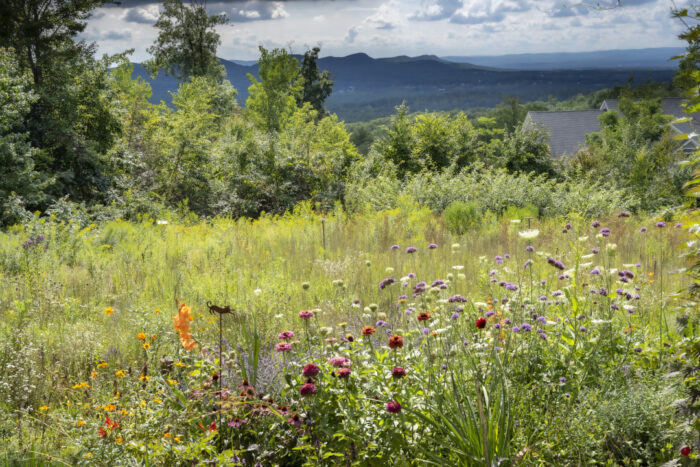
Today we’re visiting Heidi Dollard’s garden.
I have been gardening for 35 years in western Massachusetts. My gardens were always in the shade until four years ago, when we moved into a new house. The new house is on a slope and has dramatic views of the Connecticut River Valley and Holyoke Range. I now have all the sun I could ever want, and I’ve had to learn about a whole new plant palette. I’m creating a low-maintenance, bird- and pollinator-friendly yard. A landscape architect designed the hardscape and land contours, including a welcoming pebble patio under a pergola, surrounded by a mostly perennial bed that also sets the house nicely into slope. Below the perennial garden is a mown swath, and below that is a native plant meadow over our leach field.
My initial plant choices for the garden were mostly “pollinator friendly” but not necessarily native species. Since I retired two years ago, I have been volunteering with the Massachusetts Pollinator Network and have learned the importance of planting “straight” natives, not cultivars. In addition to providing nectar and pollen for adult bees and butterflies, they also provide food for early life stages and nesting and overwintering habitat. Some specialized native bees can only feed from specific native plants. I now follow Doug Tallamy’s advice to plant at least 70% natives, which allows plenty of scope for my favorite nonnatives. The foraging bees and butterflies provide endless entertainment and a sense that the garden is truly thriving.
The garden area has excellent topsoil and has been a pleasure to fill with flowering plants; nearly everything is happy there. The meadow, by contrast, has lean soil that dries out quickly, and it has been slow to establish. This year it’s finally coming into its own as the little bluestem (Schizachyrium scoparium, Zones 3–9) becomes dominant, with red-hued wild rye (Elymus canadensis, Zones 3–8) around the edges. The subtle colors and textures of the grasses are complemented by bright pops of color from seasonal flowers scattered in the meadow and are a special delight.
Most of these photos were taken by my friend and neighbor Marvin, who is an amazing photographer!
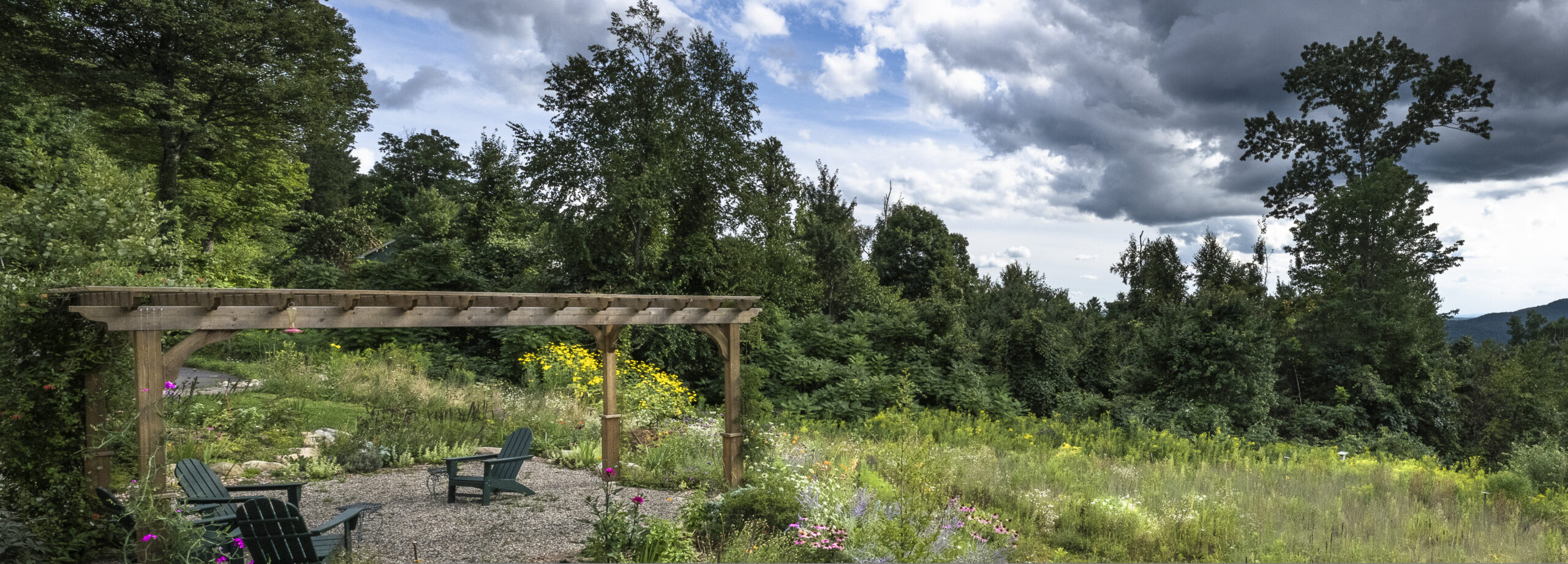
 The flowering pollinator meadow lies over the leach field. In addition to the bluestem, which I planted both from seeds and plugs, currently flowering are volunteer goldenrods (Solidago canadensis, Zones 3–9; Solidago altissima, Zones 5–10; and Euthamia graminifolia, Zones 3–9), fleabane (Erigeron strigosus, annual), boneset (Eupatorium perfoliatum, Zones 4–8), purple coneflower (Echinacea purpurea, Zones 4–9), prairie coneflower (Ratibida pinnata, Zones 3–8), New York ironweed (Vernonia noveboracensis, Zones 5–9), green-headed coneflower (Rudbeckia laciniata, Zones 4–9), and Joe Pye weed (Eutrochium purpureum, Zones 4–9).
The flowering pollinator meadow lies over the leach field. In addition to the bluestem, which I planted both from seeds and plugs, currently flowering are volunteer goldenrods (Solidago canadensis, Zones 3–9; Solidago altissima, Zones 5–10; and Euthamia graminifolia, Zones 3–9), fleabane (Erigeron strigosus, annual), boneset (Eupatorium perfoliatum, Zones 4–8), purple coneflower (Echinacea purpurea, Zones 4–9), prairie coneflower (Ratibida pinnata, Zones 3–8), New York ironweed (Vernonia noveboracensis, Zones 5–9), green-headed coneflower (Rudbeckia laciniata, Zones 4–9), and Joe Pye weed (Eutrochium purpureum, Zones 4–9).



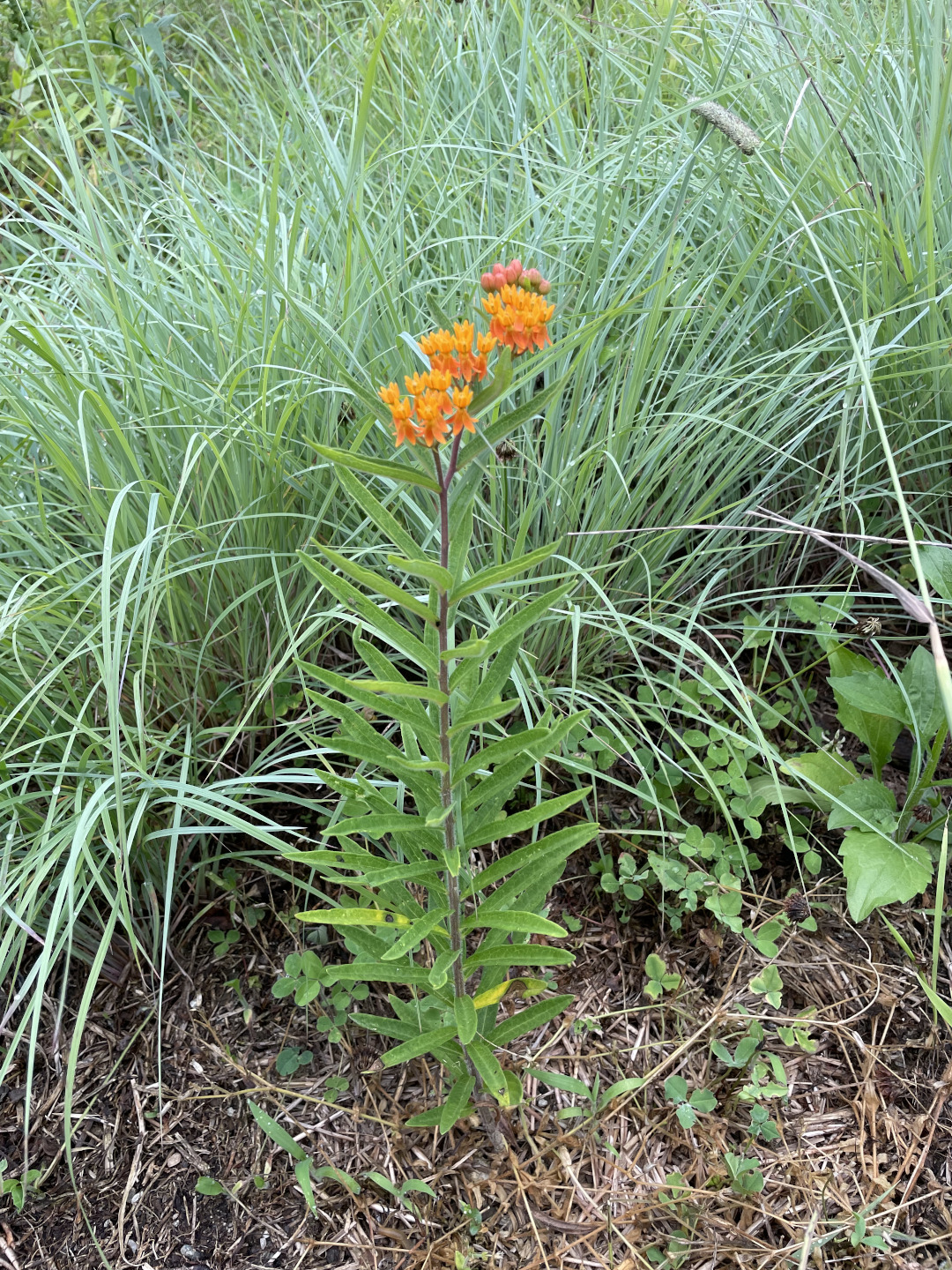

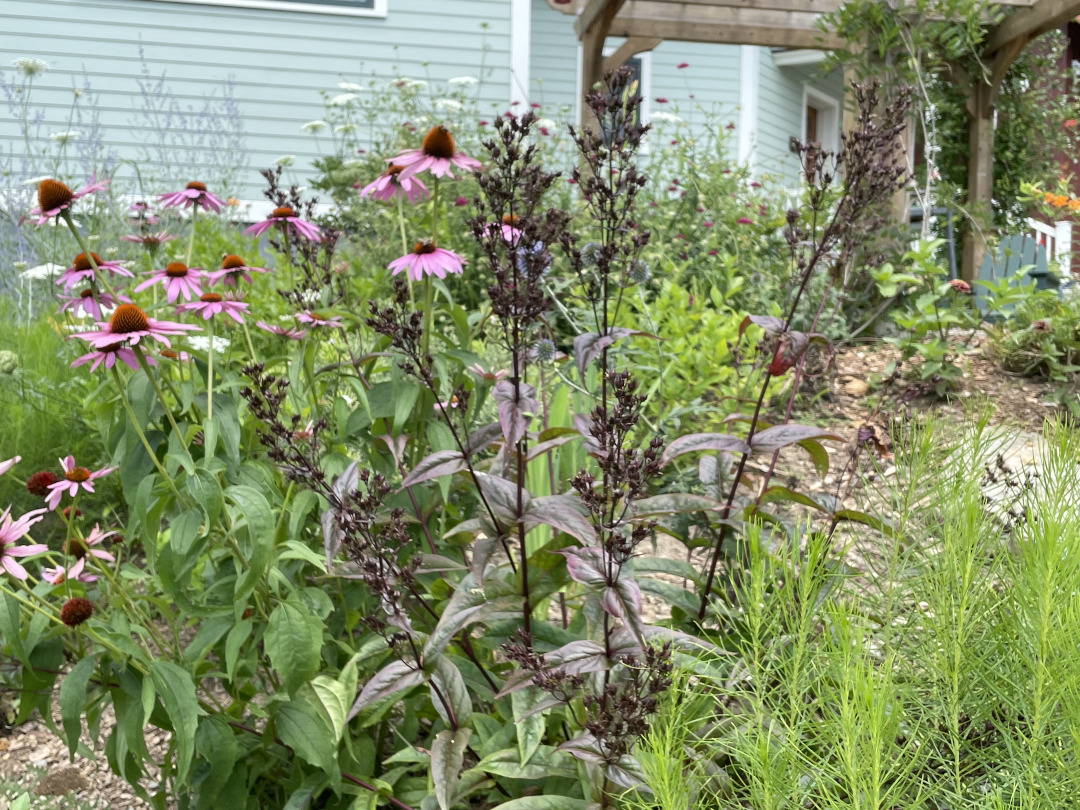

Have a garden you’d like to share?
Have photos to share? We’d love to see your garden, a particular collection of plants you love, or a wonderful garden you had the chance to visit!
To submit, send 5-10 photos to gpod@taunton.com along with some information about the plants in the pictures and where you took the photos. We’d love to hear where you are located, how long you’ve been gardening, successes you are proud of, failures you learned from, hopes for the future, favorite plants, or funny stories from your garden.
If you want to send photos in separate emails to the GPOD email box that is just fine.
Have a mobile phone? Tag your photos on Facebook, Instagram or Twitter with #FineGardening!
You don’t have to be a professional garden photographer – check out our garden photography tips!
Do you receive the GPOD by email yet? Sign up here.
Fine Gardening Recommended Products

Buffalo-Style Gardens: Create a Quirky, One-of-a-Kind Private Garden with Eye-Catching Designs
Fine Gardening receives a commission for items purchased through links on this site, including Amazon Associates and other affiliate advertising programs.

ARS Telescoping Long Reach Pruner
Fine Gardening receives a commission for items purchased through links on this site, including Amazon Associates and other affiliate advertising programs.

Lee Valley Garden Obelisks
Fine Gardening receives a commission for items purchased through links on this site, including Amazon Associates and other affiliate advertising programs.

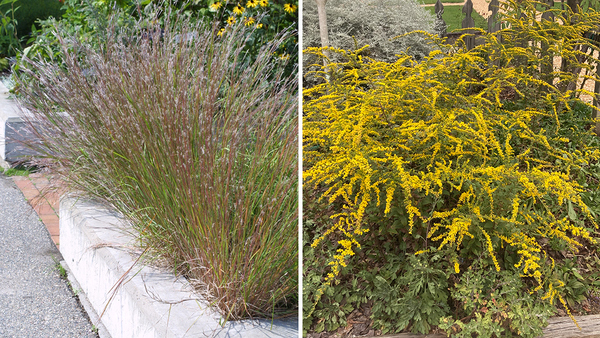
















Comments
Amazing! Well done, Heidi! Doug Tallmay rules! Thanks for sharing
Beautiful and inspiring!
What a beautiful setting you have created. I commend you for your use of native pollinators. Well done
Thank you for sharing your amazing gardens! I am so jealous of all the sun you have! Love your views too!!
Huzzah! Absolutely stunning views! Thanks for being inspired by Doug Tallamy, and providing such a wonderful pollinator habitat.
Really great!
Beautiful garden with stunning views...and kudos for choosing native plants!
Nothing like a wildflower meadow & mountains. Lovely!
This is how I hope heaven looks... what a beautiful garden you've made in a beautiful location. Thanks to you and to Marvin for these wonderful photos.
Gorgeous! Do you mow it down in the winter?or let it go? I have a much smaller strip of property..10 wide about 120 feet long, with horse fields in the background. I would love to do this.
What a great job you did creating a natural wild garden of natives with a few added non natives.
I love the wildness of it all, it looks like it just takes care of it's self.
Your photographer friend took some amazing wide shots of the garden which really shows how big it is and how it's really a part of the natural landscape!
Wonderful! Great views, too😉.
Thank you for sharing your beautiful gardens.
Now, that's my favorite kind of garden!!! Natural, colorful and a perfect habitat for pollinators and birds!
Of course the mountains do add to the stunning location but a meadow full of color takes the prize!!!
thehandymanmodesto.com/
Wow it is one of the most beautiful garden i ever saw. thank you for sharing this article.
Log in or create an account to post a comment.
Sign up Log in